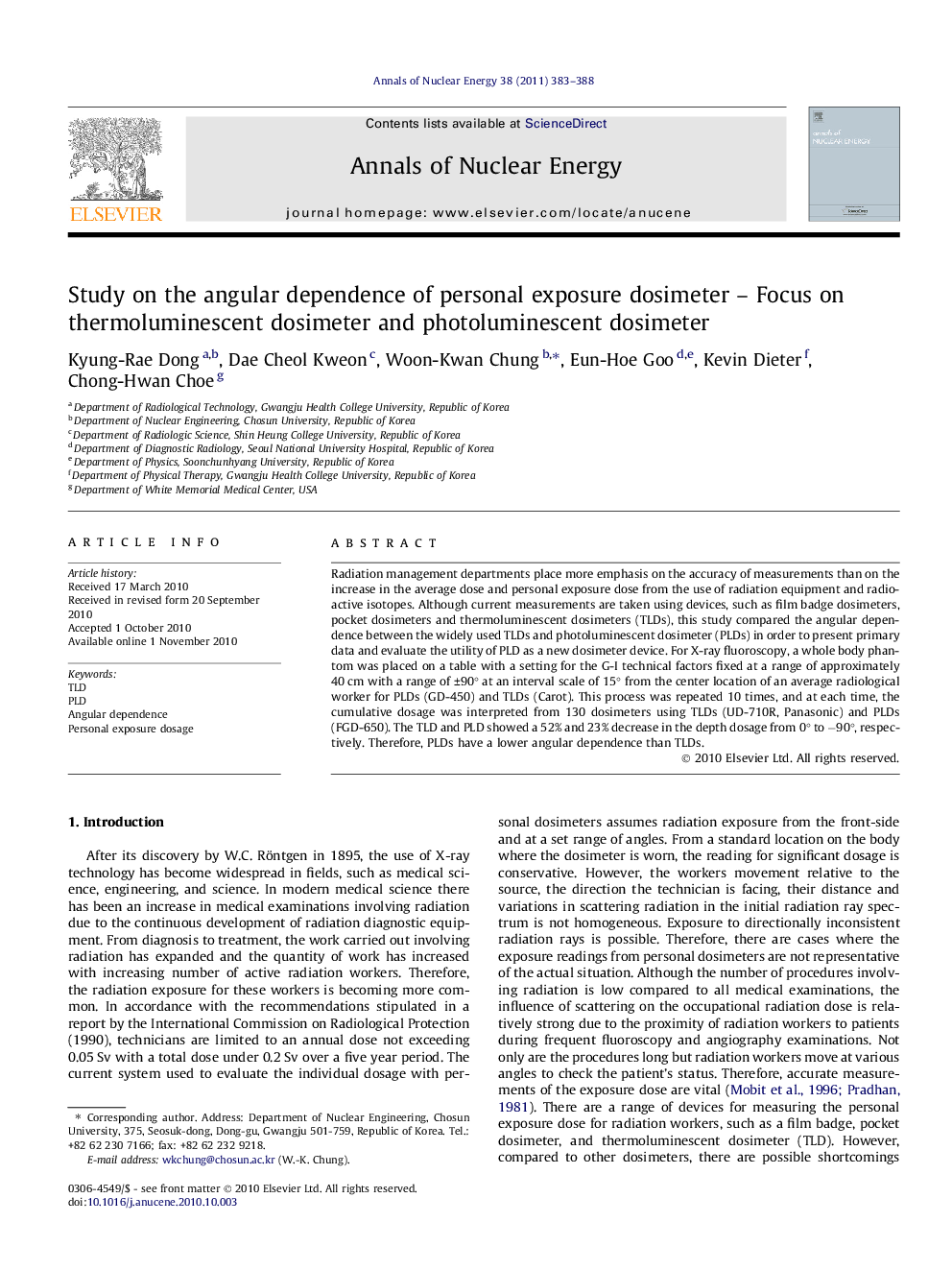| Article ID | Journal | Published Year | Pages | File Type |
|---|---|---|---|---|
| 1729498 | Annals of Nuclear Energy | 2011 | 6 Pages |
Abstract
Radiation management departments place more emphasis on the accuracy of measurements than on the increase in the average dose and personal exposure dose from the use of radiation equipment and radioactive isotopes. Although current measurements are taken using devices, such as film badge dosimeters, pocket dosimeters and thermoluminescent dosimeters (TLDs), this study compared the angular dependence between the widely used TLDs and photoluminescent dosimeter (PLDs) in order to present primary data and evaluate the utility of PLD as a new dosimeter device. For X-ray fluoroscopy, a whole body phantom was placed on a table with a setting for the G-I technical factors fixed at a range of approximately 40 cm with a range of ±90° at an interval scale of 15° from the center location of an average radiological worker for PLDs (GD-450) and TLDs (Carot). This process was repeated 10 times, and at each time, the cumulative dosage was interpreted from 130 dosimeters using TLDs (UD-710R, Panasonic) and PLDs (FGD-650). The TLD and PLD showed a 52% and 23% decrease in the depth dosage from 0° to â90°, respectively. Therefore, PLDs have a lower angular dependence than TLDs.
Keywords
Related Topics
Physical Sciences and Engineering
Energy
Energy Engineering and Power Technology
Authors
Kyung-Rae Dong, Dae Cheol Kweon, Woon-Kwan Chung, Eun-Hoe Goo, Kevin Dieter, Chong-Hwan Choe,
